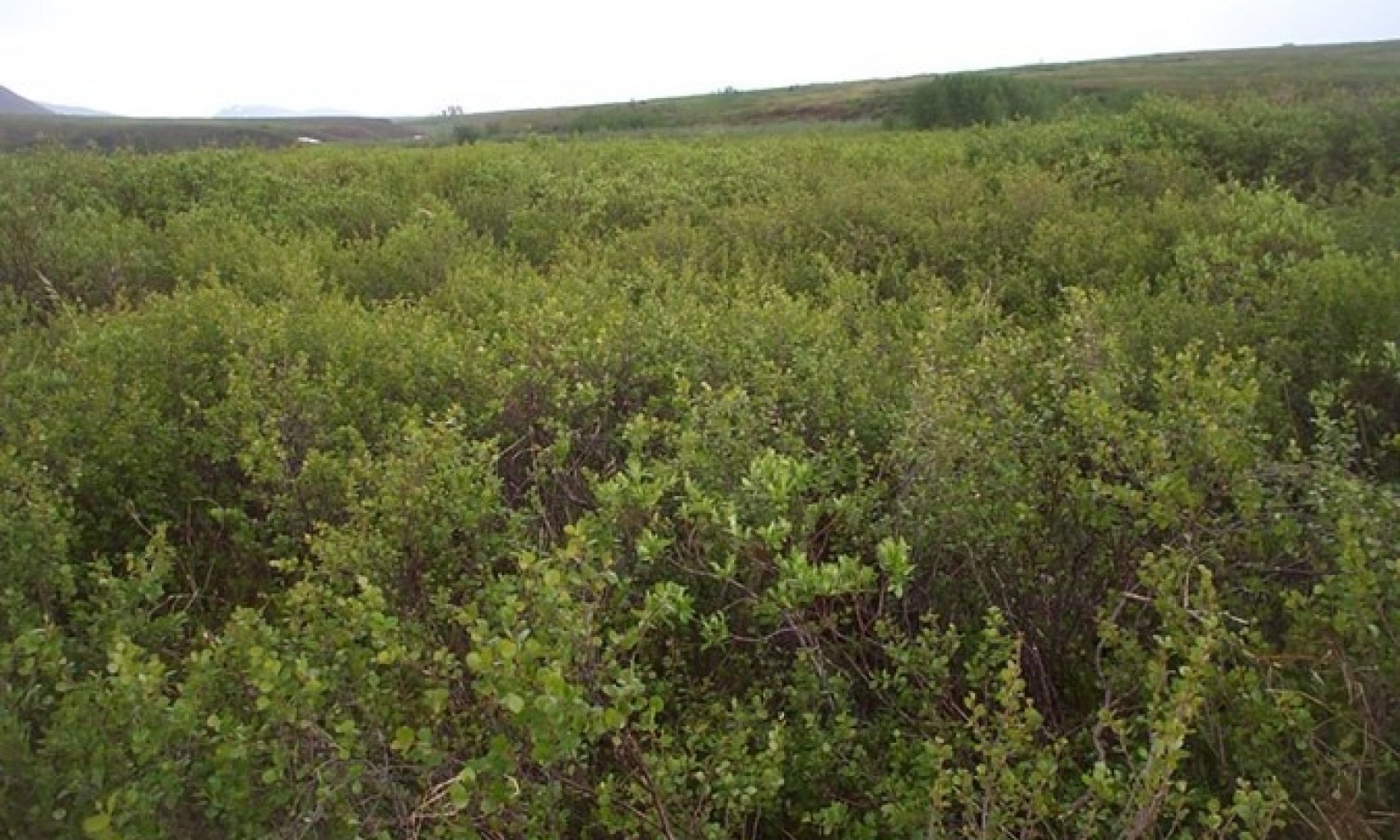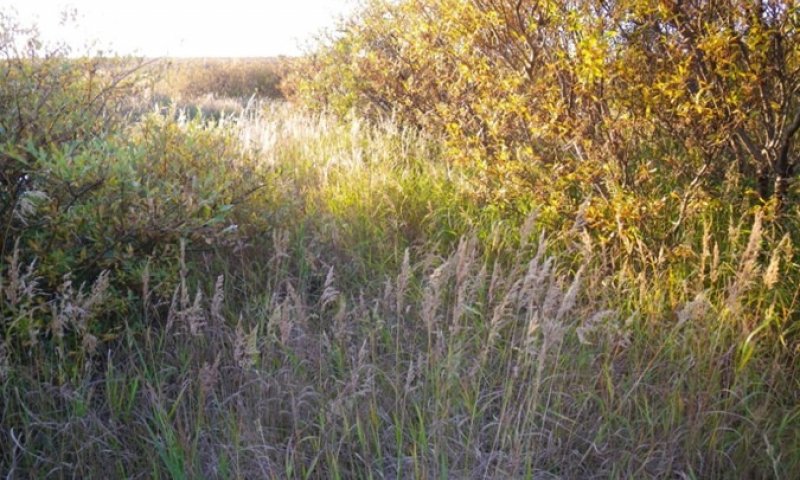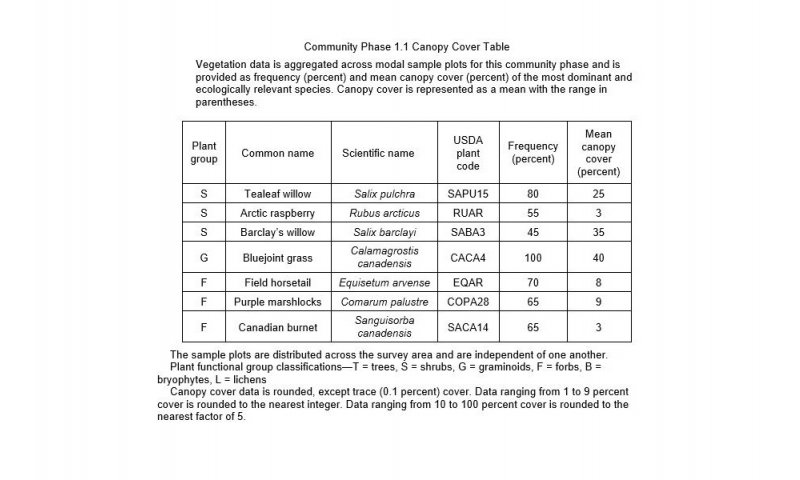

Natural Resources
Conservation Service
Ecological site R236XY173AK
Subarctic Riparian Complex Loamy Flood Plains
Last updated: 2/13/2024
Accessed: 12/21/2025
General information
Provisional. A provisional ecological site description has undergone quality control and quality assurance review. It contains a working state and transition model and enough information to identify the ecological site.
MLRA notes
Major Land Resource Area (MLRA): 236X–Bristol Bay-Northern Alaska Peninsula Lowlands
The Bristol Bay-Northern Alaska Peninsula Lowland Major Land Resource Area (MLRA 236) is located in Western Alaska. This MLRA covers approximately 19,500 square miles and is defined by an expanse of nearly level to rolling lowlands, uplands and low to moderate hills bordered by long, mountain footslopes. Major rivers include the Egegik, Mulchatna, Naknek, Nushagak, and Wood River. MLRA 236 is in the zone of discontinuous permafrost. It is primarily in areas with finer textured soils on terraces, rolling uplands and footslopes. This MLRA was glaciated during the early to middle Pleistocene. Moraine and glaciofluvial deposits cover around sixty percent of the MLRA. Alluvium and coastal deposits make up a large portion of the remaining area (Kautz et al., 2012; USDA, 2006).
Climate patterns across this MLRA shift as one moves away from the coast. A maritime climate is prominent along the coast, while continental weather, commonly associated with Interior Alaska, is more influential inland. Across the MLRA, summers are general short and warm while winters are long and cold. Mean annual precipitation is 13 to 50 inches, with increased precipitation at higher elevations and areas away from the coast. Mean annual temperatures is between 30 and 36 degrees F (USDA, 2006).
The Bristol Bay-Northern Alaska Peninsula MLRA is principally undeveloped wilderness. Federally managed land includes parts of the Katmai and Aniakchak National Parks, and the Alaska Peninsula, Becharof, Togiak and Alaska Maritime National Wildlife Refuges. The MLRA is sparsely populated. Principal communities include Dillingham, Naknek, and King Salmon. Commercial fishing in Bristol Bay and the Bering Sea comprises a major part of economic activity in the MLRA. Other land uses include subsistence activities (fishing, hunting, and gathering) and sport hunting and fishing (USDA, 2006).
Classification relationships
Alaska Vegetation Classification:
Open tall scrubland (II.B.2 - level III) / Willow scrubland (II.B.2.a - level IV)
(Viereck et al., 1992)
Ecological site concept
This ecological site is on convex berm features on flood plains of low energy rivers. Site elevation is between 160 and 980 feet above sea level. Slopes are nearly level (0 – 3 percent). Soil hydrology in the major influencer of vegetation on this site. Soils are somewhat poorly drained. There is a shallow water table during the growing season and non-scouring flooding contributes to water inputs.
The reference state supports one community. The reference plant community is characterized as an open tall scrubland (Viereck et al., 1992). It is composed of one or more willow species with hydrophytic graminoids and forb species throughout. This community is resilient to the hydrologic stressors of this landform position.
Associated sites
| R236XY144AK |
Subarctic Scrub Peat Terraces R236XY144AK describes terraces that experience ponding disturbances. Terraces are higher in elevation and do not flood like the valley flood plains described by R236XY173AK. Different vegetative communities are supported on these sites due to differences in site and soil characteristics. |
|---|---|
| F236XY176AK |
Boreal Woodland Loamy Flood Plains Both sites are on valley flood plain talfs. F236XY176AK briefly floods and supports a boreal forest community in the reference state. R236XY173AK floods for a long time. This disturbance and site hydrology does not support trees. |
Similar sites
| F236XY176AK |
Boreal Woodland Loamy Flood Plains Both sites are on valley flood plain talfs. F236XY176AK supports a forest community in the reference state, which is not present on R236XY173AK. Ecotonal areas exist where trees are present but are not recognized as a forest community. |
|---|
Table 1. Dominant plant species
| Tree |
Not specified |
|---|---|
| Shrub |
(1) Salix pulchra |
| Herbaceous |
(1) Calamagrostis canadensis |
Click on box and path labels to scroll to the respective text.


